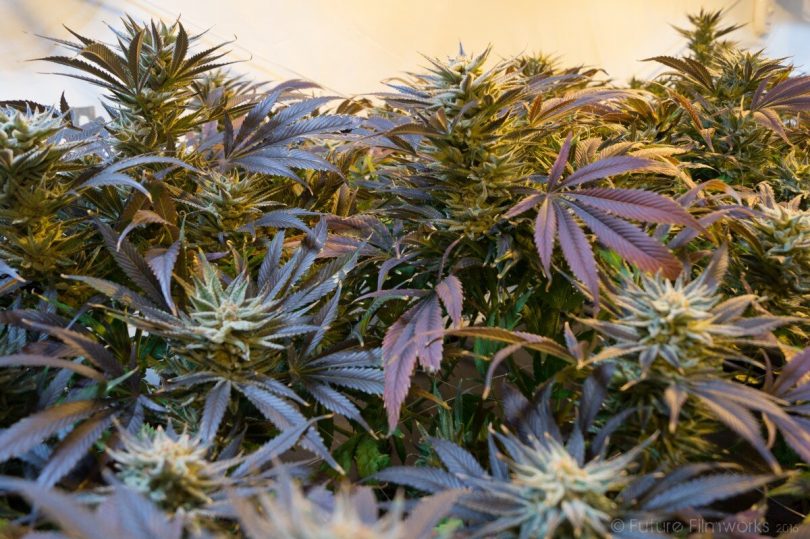A 2010 study that tested 46,211 samples of cannabis for potency found an upward trend in strength between the years 1993-2008. [1] During that time period, the average THC percentage went from a mean of 3.4% to 8%, with some samples reaching as high as 29.3% strength. As cannabis becomes more regulated, measuring its potency, thus its THC content, becomes increasingly important in order to evaluate the risks and rewards of increased usage.
How we respond to various cannabinoids
Cannabis primarily bonds to two cannabinoid receptors in the human body called CB1 and CB2 receptors. [2] THC, the primary psychoactive cannabinoid, primarily binds to CB1 receptors while CBD, the second most common cannabinoid, can interact with both receptors. Scientists have found as many as 120 other cannabinoids present in cannabis in various concentrations, leading to possible variations in cannabis potency. [3]
How minor cannabinoids can affect potency
Cannabinoids vary based on their chemical structures. As more cannabinoids are isolated and identified, it is possible to study how each compound may produce various effects. [4] One example: varinic cannabinoids, don’t interact well with CB1 receptors as they are composed of less than 2 carbon atoms. [5] Current research suggests varinic cannabinoids may be useful in treatment of people affected by autism. Another: cannabitrol (CBT) has shown promise in the treatment of breast cancer: this cannabinoids with 8-9 carbon atoms tend to bind more to estrogen receptors than cannabinoid receptors. [6]
The risks of high-potency cannabis
While many of these newly discovered cannabinoids show therapeutic potential for a variety of treatments, there are also potential risks associated with higher potency cannabis. Addiction specialists have compared it to the strengthening of alcohol or tobacco, claiming, “The more potent a drug is, the stronger the possibility of addiction and the more likely the person will continue to purchase and use the product.” [7] High potency cannabis also may increase the risk of psychosis or have a “detrimental effect on cognitive function.” [8] With this in mind, it may prove to be productive to spend more time investigating minor cannabinoids as an alternative to high potency cannabis.
References:
[1] Mehmedic, Z. et al. Potency Trends of Δ9-THC and Other Cannabinoids in Confiscated Cannabis Preparations from 1993 to 2008*. Journal of Forensic Sciences; (2010); 55(5), 1209–1217. https://doi.org/10.1111/j.1556-4029.2010.01441.[2] Reggio, P. Endocannabinoid Binding to the Cannabinoid Receptors: What Is Known and What Remains Unknown. Current Medicinal Chemistry; (2010); 17(14), 1468–1486. https://doi.org/10.2174/092986710790980005 [Journal impact factor = 4.184 ] [Times cited = 184]
[3] Walsh, K. B. et al. Minor Cannabinoids: Biosynthesis, Molecular Pharmacology and Potential Therapeutic Uses. Frontiers in Pharmacology; (2021); 12. https://doi.org/10.3389/fphar.2021.777804 [Journal impact factor = 4.400 ] [Times cited = 4]
[4] Radwan, M. M. et al. Isolation and Pharmacological Evaluation of Minor Cannabinoids from High-PotencyCannabis sativa. Journal of Natural Products; (2015); 78(6), 1271–1276. https://doi.org/10.1021/acs.jnatprod.5b00065 [Journal impact factor = 4.050] [Times cited = 122]
[5] Navarro, G. et al. Pharmacological data of cannabidiol- and cannabigerol-type phytocannabinoids acting on cannabinoid CB1, CB2 and CB1/CB2 heteromer receptors. Pharmacological Research; (2020); 159, 104940. https://doi.org/10.1016/j.phrs.2020.104940 [Journal impact factor = 7.65] [Times cited = 32]
[6] Carbone, M. et al. Chemical characterisation of oxidative degradation products of Δ9-THC. Tetrahedron; (2010); 66(49), 9497–9501. https://doi.org/10.1016/j.tet.2010.10.025 [Journal impact factor = 2.475] [Times cited = 32]
[7] Stuyt, E. et al. The Problem with the current high Potency THC marijuana from the Perspective of an Addiction Psychiatrist. Missouri Medicine; (2018); 115(6), 482–486. https://www.ncbi.nlm.nih.gov/pmc/articles/PMC6312155/pdf/ms115_p0482.pdf [Times cited = 51]
[8] Murray, R. M. et al. Traditional marijuana, high-potency cannabis and synthetic cannabinoids: increasing risk for psychosis. World Psychiatry; (2016); 15(3), 195–204. https://doi.org/10.1002/wps.20341 [Journal impact factor = 49.548] [Times cited = 226]
Image: https://pxhere.com/en/photo/1190583










